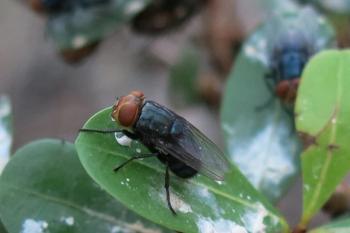
Industry seeks home for unwanted horse
Washington — A national steering committee that will promote and monitor equine welfare is underway after a debut industrywide Unwanted Horse Summit.
WASHINGTON — A national steering committee that will promote and monitor equine welfare is underway after a debut industrywide Unwanted Horse Summit.
The AAEP-sponsored Unwanted Horse Summit welcomed 26 horse industry groups to discuss the plight of the country's unwanted horses, the current state of rescue and retirement facilities, and the commercial transportation of equines for slaughter.
More than 25 breed groups, sport and discipline organizations, rescue and retirement facilities, veterinary associations and welfare groups convened April 19 during the American Horse Council's (AHC) annual conference. The American Association of Equine Practitioners (AAEP) organized the Unwanted Horse Summit.
"This is not the end of the road. This is the beginning of a long journey," says AAEP President Dr. Scott Palmer, owner of New Jersey Equine Clinic in Clarksburg. "This problem of the unwanted horse is so pervasive that it cannot be solved from one segment of the industry alone, so we need support from all the groups."
Though Palmer declined to speculate about the shape or nature of the steering committee, he says the AAEP will sponsor the fledgling group until it can stand on its own. In a similar way, AAEP convened a summit in 2001 to examine medications and drug testing for racehorses. The Racehorse Medication Summit spawned an industrywide rules-drafting body, the Racing Medication and Testing Consortium (RMTC), which now is governed by a board of directors consisting of 26 racing industry groups.
BLM halts sale of wild horses
"We're going to look very hard at the blueprint of the Medication Consortium. The summit was AAEP organized, and we will be a member; we will shepherd it, and then we will step back once it is rolling," Palmer says. "The AAEP got it started because no one wanted to touch the explosive issue and also because we knew that we could pull it off."
Within a year of the Medication Summit, the subsequent RMTC was created, incorporated and self funding through voluntary donations from its board members.
"It's a credit to AAEP that they are willing to step into the fray and be an honest broker for important issues," says Scot Waterman, DVM, executive director of RMTC. "But there is no one organization that is big enough or smart enough to make things happen on their own, so there must be willing, active participants to lead from here."
dvm Newsbreak
Though the summit didn't discuss the American Horse Slaughter Prevention Act per se, it was an underlying factor and in many ways the impetus for the gathering, Palmer says.
"We tried to refocus the debate from the slaughter bills to the issue of the unwanted horse. There is so much divisiveness that we wanted to find consensus and just focus on the welfare of the horse," he says.
The Slaughter Prevention Act (H.R. 503) was reintroduced in the 109th Congress by Rep. John E. Sweeney, R-N.Y. About 80 U.S. representatives co-sponsor the legislation.
The AAEP, AHC and American Veterinary Medical Association do not endorse the proposal because murky language might unintentionally bar routine sales and transportation of horses, and funding shortfalls might relegate the animals to inadequate care. About 80,000 horses are slaughtered each year in the United States, according to the U.S. Department of Agriculture. Thousands of new equine rescue and retirement facilities would be needed to accommodate unwanted horses in the first year that a slaughter ban might succeed, AAEP reports. A horse's basic annual needs require about $1,825 excluding veterinary care.
Newsletter
From exam room tips to practice management insights, get trusted veterinary news delivered straight to your inbox—subscribe to dvm360.






